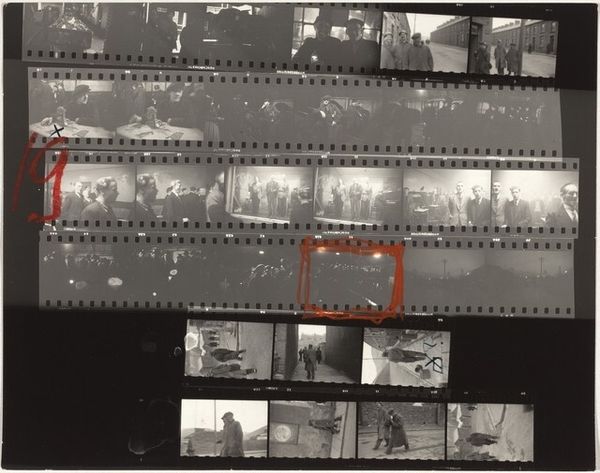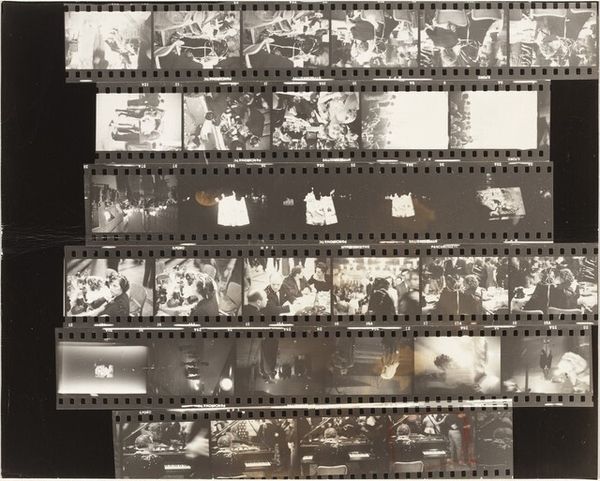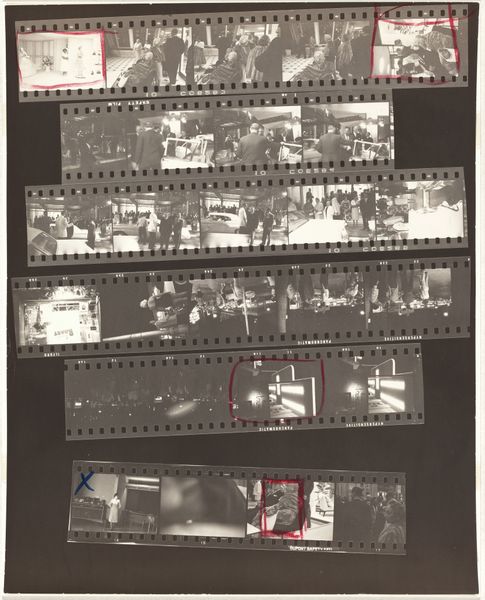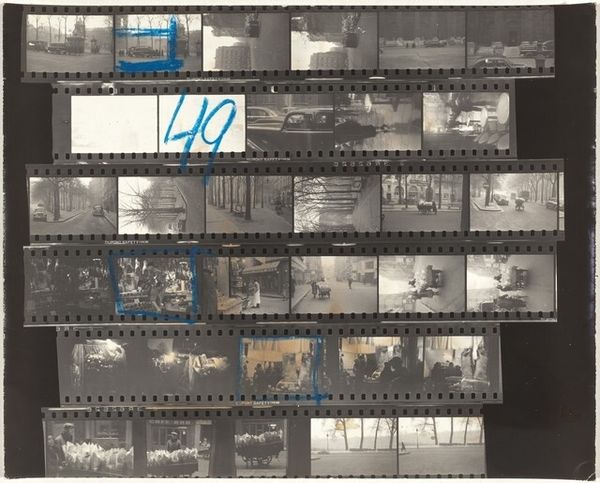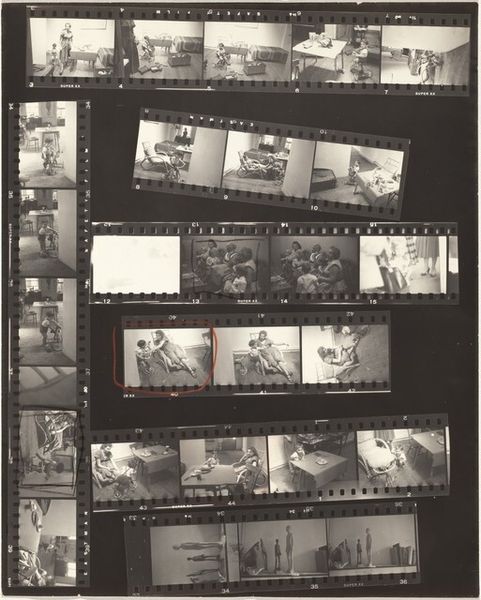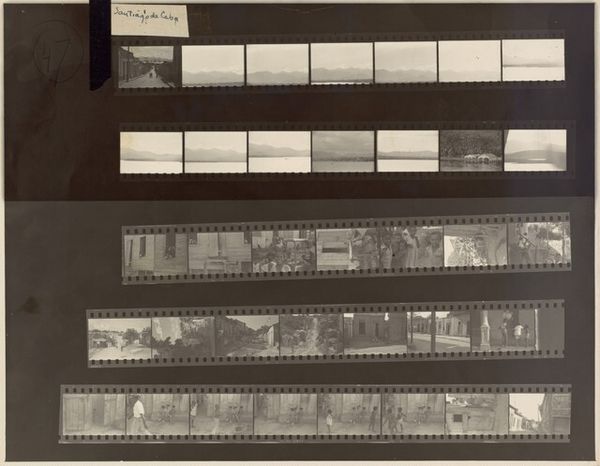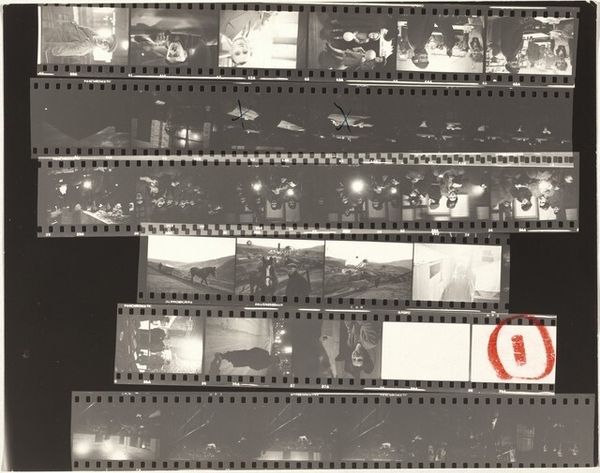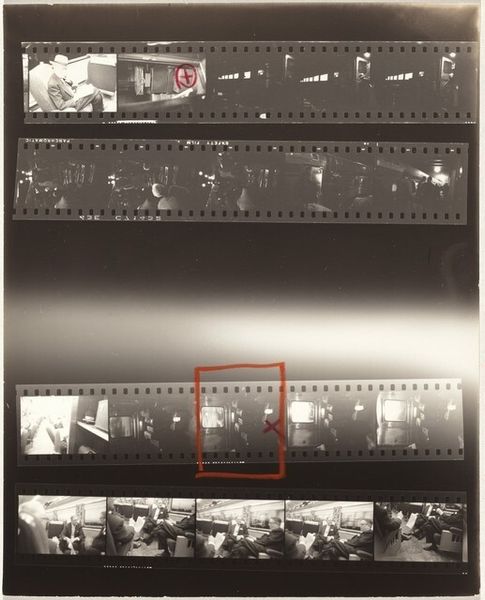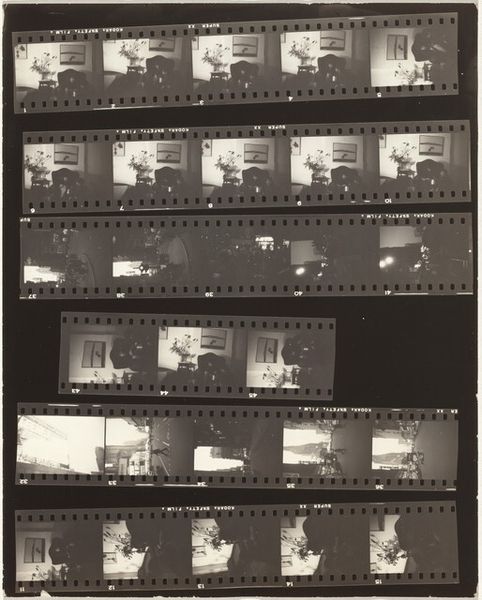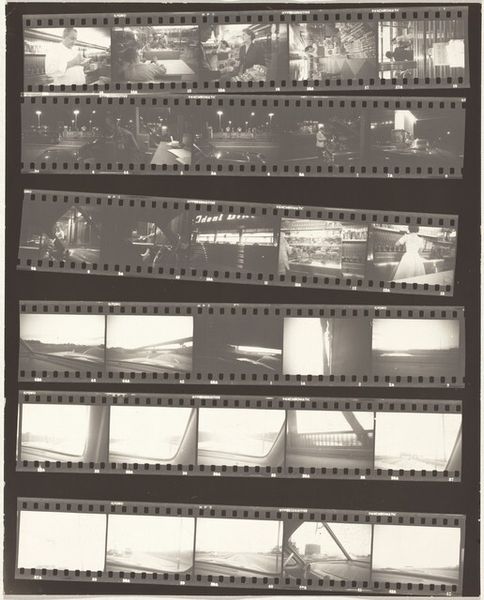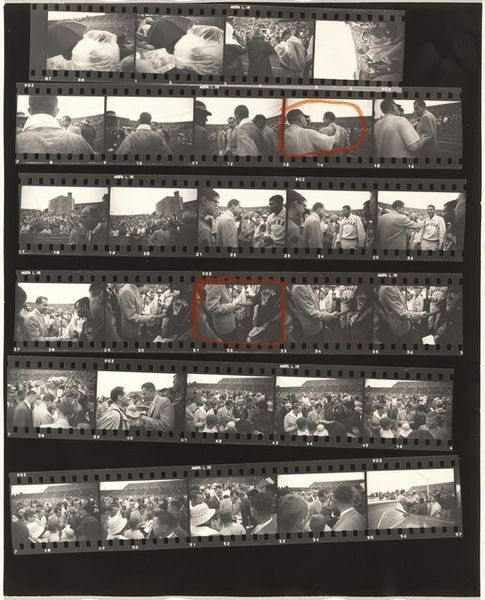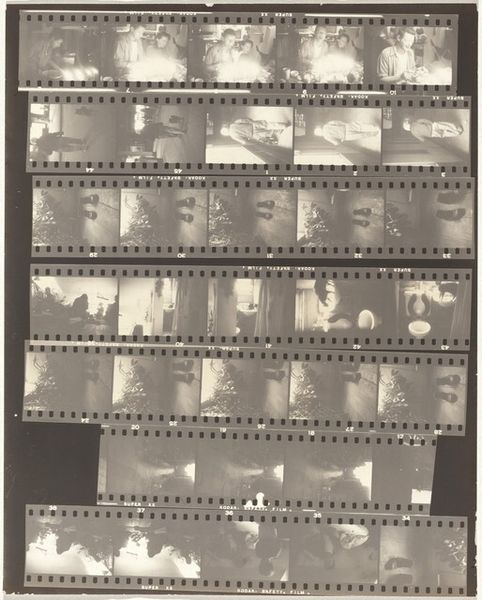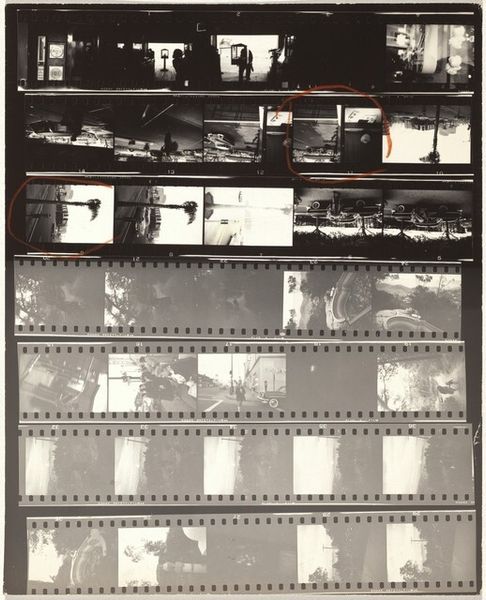
contact-print, photography
#
portrait
#
contact-print
#
photography
#
photojournalism
#
group-portraits
#
pop-art
#
realism
Dimensions: overall: 25.2 x 20.2 cm (9 15/16 x 7 15/16 in.)
Copyright: National Gallery of Art: CC0 1.0
Curator: Robert Frank’s contact print, "Nixon campaign 28," created in 1960, presents a raw and revealing look into a political campaign. The imagery feels especially significant when considering how photojournalism evolved through figures such as Frank in this era. What are your initial thoughts on this piece? Editor: Bleak, I suppose, would be the first word that comes to mind. The tight, almost claustrophobic compositions. I get this immediate sense of manufactured optimism… like everyone is trying too hard to smile, especially Nixon, who seems to be forcing it in every shot. Curator: That sense of forced optimism definitely speaks to the way political images are often carefully constructed for public consumption. It makes me think of the broader context: the 1960s were a time of huge social and political change, and the media's role in shaping perceptions was becoming increasingly significant. Editor: And Frank, he seemed intent on unmasking all that artifice, right? Look at these gritty, high-contrast images. This isn't the polished, airbrushed politician we are used to seeing. It feels closer to cinéma vérité in its rawness—it feels unscripted. Curator: Precisely! This is documentary photography veering towards an intentional subjectivity. It really challenges the perceived neutrality that had long been associated with photojournalism. In using contact prints, he further highlights the artist's process, the selection, and therefore his judgment. Editor: Right! I see so much storytelling in the choice of images here. These fragments almost mimic memory, these blurred visions. So many shadowy figures populate the backdrop—but do they have any actual substance or are they stage props? I am left wondering… Curator: Those visual textures, the almost accidental framing... This reflects a deliberate shift away from idealized representations towards a more ambiguous portrayal of political life. The imagery becomes imbued with his critical perspective, reflecting widespread disillusionment. Editor: Looking back, that critical eye of Frank felt groundbreaking in so many respects. And I imagine it had a real impact in helping shape a more wary or sophisticated kind of viewer, perhaps for the worse, maybe better! Curator: Exactly. His contributions have made lasting impact in how we consume political imagery to this very day. Thank you for sharing your thoughts.
Comments
No comments
Be the first to comment and join the conversation on the ultimate creative platform.
